Walking under an emerald canopy, you listen to the sounds of croaking tree frogs enshrouded by mighty basket ferns and catch a flash of color from the chattering birds overhead. Giant fan palms shade you from the heat of the sun, and the air is filled with the intoxicating smells of jungle flowers. Making your way past tangles of tree roots and trailing vines, your curiosity is peaked by a musky rat-kangaroo foraging for fruits and fungi on the forest floor. Continuing, you come upon a silvery waterfall, its cooling mists a welcome respite. This tropical Eden has existed for 165 million years—every sense is awakened as you pay homage to this ancient realm. You are in the Daintree—the oldest lowland rain forest on Earth.
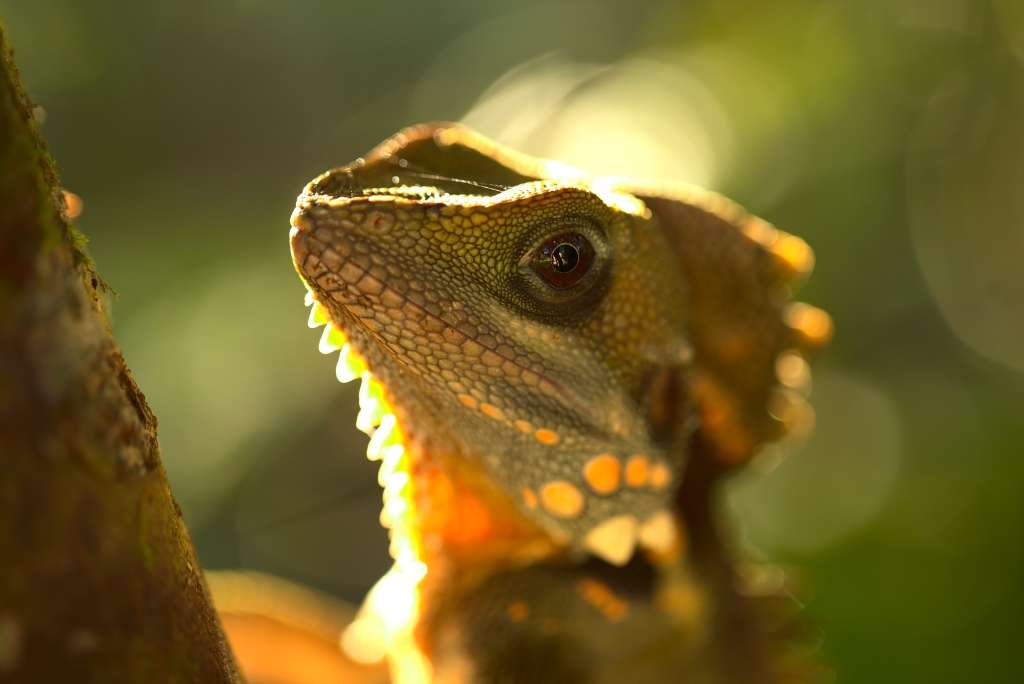
Boyd’s Forest Dragon, an arboreal agamid lizard found in the Wet Tropics of Queensland World Heritage Area, which Daintree National Park is a part of.
The rain forest meets the reef on the coast of the Coral Sea. Here, two UNESCO World Heritage Sites converge: the Great Barrier Reef and Daintree National Park. This pristine area is highlighted on a Nat Hab tour of Australia North: Kakadu, Daintree & the Great Barrier Reef. Leaving white sand beaches behind, travelers will ferry across the Daintree River, perhaps catching a glimpse of a saltwater crocodile, before arriving at a secluded ecolodge in the heart of the lush jungle.
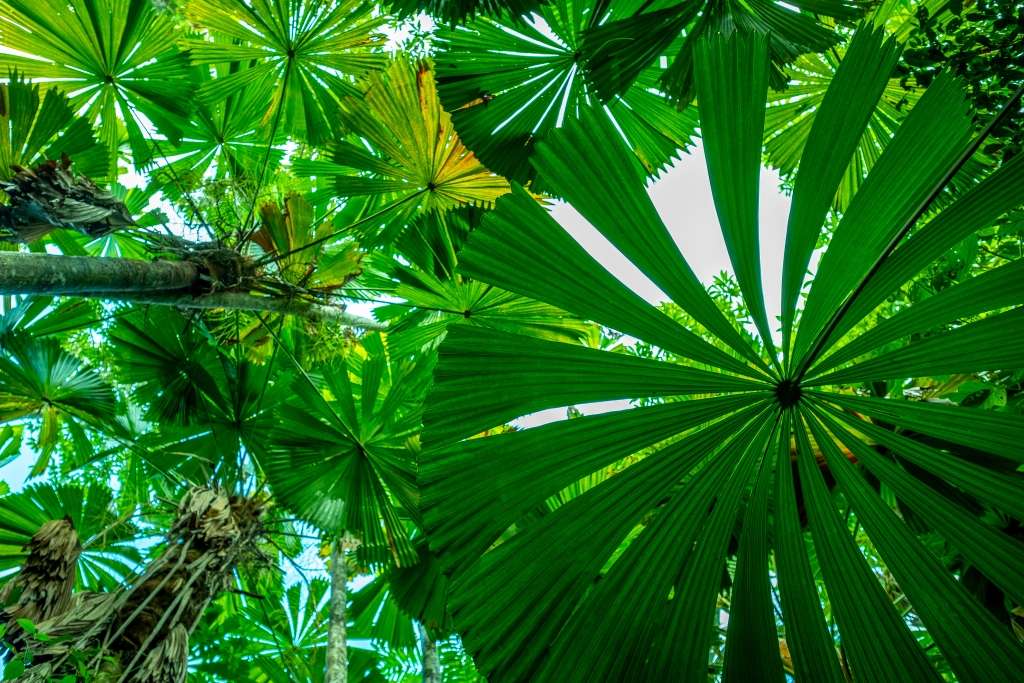
Cooling fan palms protect hikers from the sun’s rays in the Daintree Rainforest.
Flora
Multi-colored orchids bloom and ancient ferns abound in the Daintree Rainforest. A walk through the verdant jungle evokes a sense of being transported through time to the Jurassic and Cretaceous periods when dinosaurs roamed the Earth. David Attenborough had this line of thinking when he described the prehistoric plant life here as ‘Green Dinosaurs.’ Exotic fruits range from the pink and pear-shaped satinash, eaten by musky rat-kangaroos, to snow ginger and blue quandongs, favored by southern cassowaries. Perhaps the most famous species is the idiot fruit, one of the planet’s most primitive flowering plants, seen in fossils 88 million years old. Highly poisonous to all animals, the idiot fruits’ only seed dispersal method is gravity. Hiking past huge fronds of king ferns, Nat Hab travelers will explore the rain forest on guided excursions. There will also be an opportunity to visit the Botanical Ark, a conservation-driven ethno-botanical garden, to learn about rain forest plants that indigenous cultures from more than 40 countries use for food, shelter, medicine, cosmetics, fibers, oils and dyes.
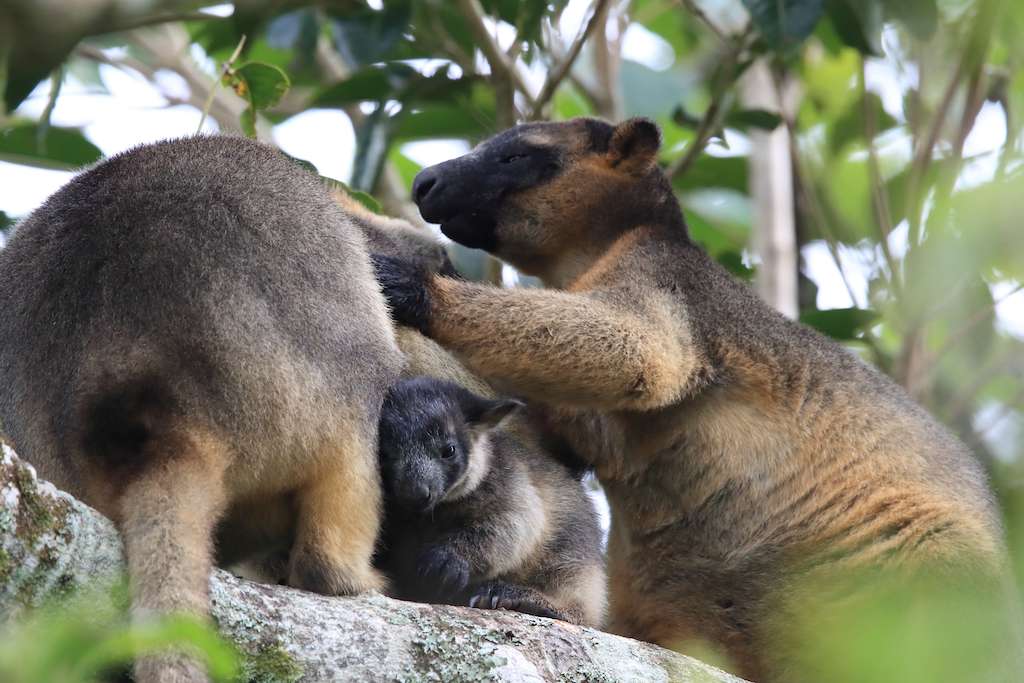
Lumholtz’s tree kangaroos are a rare sight in the rain forest canopy.
Fauna
This remote region is home to a stunning array of biodiversity, accounting for 90% of Australia’s butterfly and bat species and 30% of Australia’s marsupial, frog and reptile species. Lumholtz’s and Bennett’s tree kangaroos are seldom seen, but a lucky few may spot them munching on leaves in the upper canopy. Like these rare tree kangaroos, there are many endemic species found only in the Daintree. Bandicoots and long-tailed pygmy possums roam the forest at night. By day, echidnas seek out tasty termites, and endangered southern cassowaries feed on exotic fruits—these flightless birds with distinctive blue faces and necks can be traced back to the time of Gondwana. On an early morning boat expedition, nature photographers will be in for a treat as Nat Hab naturalist guides point out some of the Daintree’s 430 bird species, including lovely fairywrens, yellow-spotted honeyeaters, golden bowerbirds, kingfishers and birds-of-paradise.
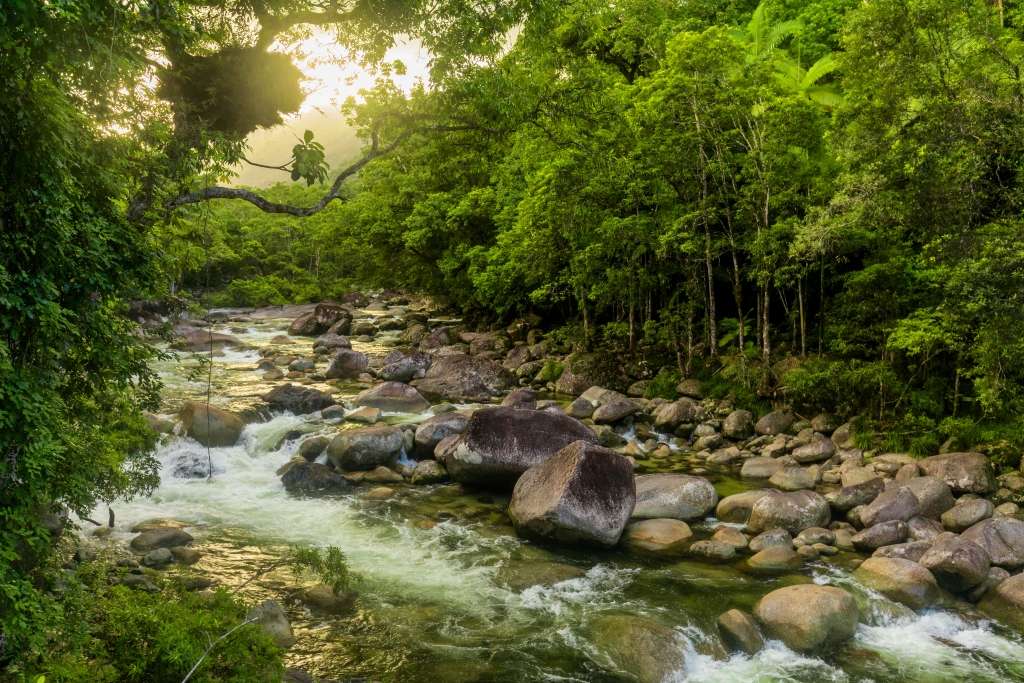
Mossman Gorge in Daintree National Park is a site of great importance to the indigenous Eastern Kuku Yalanji people.
Aboriginal Homeland
Rushing rivers run through gorges and old-growth rain forests drape the mountainsides for 460 square miles in Daintree National Park. This land is home to the Eastern Kuku Yalanji people, who have lived here for 50,000 years, and sacred sites are found throughout the region. Nat Hab travelers will visit Mossman Gorge, a place of great significance, and have the special opportunity to learn more about traditional sustainable living during cultural encounters with Aboriginal people.
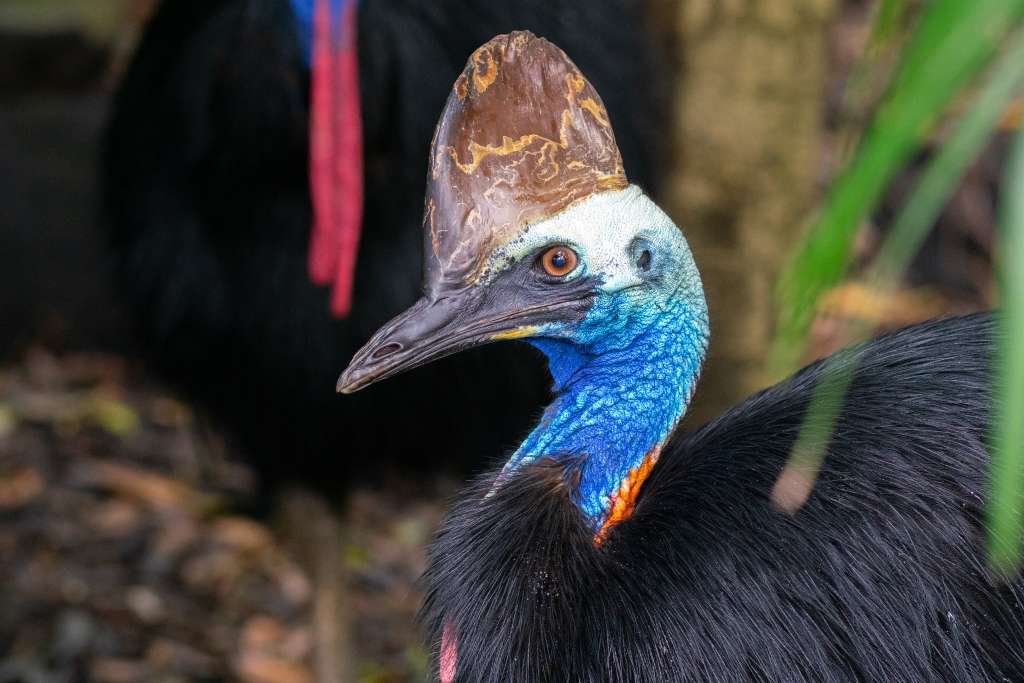
An endangered cassowary searches for fallen fruit under the forest canopy. This keystone species is a seed disperser of more than 230 tropical plants and is the only bird capable of digesting the poisonous cassowary plum.
Feeling ready to venture into the jungle’s depths? Experience the wonders of this ‘Paradise Lost,’ snorkel the Great Barrier Reef, and head into the Outback on a Northern Australia tour.

